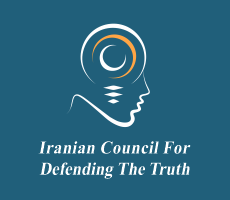The Mediterranean and the MENA area have acquired a new and more important centrality in the international economic and geopolitical scenario. Foreign trade (import-export) of the main countries of the world (from China to the USA) and of Europe (Germany, Italy, France) to the countries of the southern shore of the Mediterranean is constantly growing. In the last 20 years, the economies of the countries of the MENA area (the Middle East and North Africa) have had an average GDP growth of + 4.4% per year, higher than the average growth recorded in the European Union.
In this scenario we have witnessed the slow but inexorable loss of hegemony and centrality of the United States and imperialist vassals, in particular after the new dynamics that have arisen in the region following the season of the so-called ‘Arab springs’, and the simultaneous entry of a new actor on the Mediterranean scene: China.
The Asian giant has increased its foreign trade in this area by 841% in recent years. Most of this international trade was transported by sea and it passed through the Suez Canal. Because of the enlargement that took place in 2015, the Canal is now the main hub of world maritime traffic. The first post-enlargement data indicate sustained growth and today Suez has an overall traffic volume that is almost four times that of the Panama Canal. Suez is also central to Chinese strategies and the revival of the ancient Silk Road (Belt and Road Initiative).
Chinese investments in the Canal and Egypt, along with the presence in the ports of Piraeus, Spain and Italy, outline a strategy of strong presence in the Mediterranean. On the other hand, it is sufficient to consider that the European GDP of over 15,500 billion euros and that of the MENA countries of over 3,500 billion (a value which together largely exceeds the US GDP) are the basis for an overall exchange of the Euro-Mediterranean area with China which reaches 751 billion dollars a year.
Huge numbers, which testify how the world center of gravity has now shifted to the east, precisely in Eurasia. Given the simultaneous emergence of regional actors and Eurasian powers, the United States has begun to consider the Middle East as too complicated a place to manage according to its own interests. Nevertheless without renouncing its intentions of destabilizing a strategic area at a geopolitical level and fundamental for Asian nations as the main energy supplier.
At this point, the regional powers come into play and can take on the role of stabilizers with the support of heavyweights such as China and Russia. Countries like Iran and Turkey have the prestige, authority and influence needed to give the region the necessary stability without the nefarious imperialist interference. As stated by Iranian President Ebrahim Raisi in commenting on the meeting between the foreign ministers of Iran and Turkey, regional cooperation between the two countries should turn into “international cooperation”, creating an interaction with effects on the entire international community.
In a similar context, Italy could and should work to stabilize the region through cooperation: after Germany, Italy is the second trading partner of the countries of the Mena area. Rome boasts an articulated presence of large and small companies that have opened branches and operating structures. 1.360 Italian companies were surveyed in Turkey, 957 in Egypt, 647 in Tunisia, 330 in the Arab Emirates and 150 in Morocco.
Italy – and especially the South – is the natural logistic platform to connect the Asia / Suez / Mediterranean Sea routes with continental Europe and its productive heart. Ports and logistics are now taking on an essential role: both north and south of the peninsula. Piraeus is an important hub for China even though is not connected to central Europe. Genoa and Trieste, on the other hand, are the ideal gateway to the productive heart of continental Europe, while the ports of the South (the pair Naples-Salerno on the Tyrrhenian and Bari-Taranto on the Adriatic ridge) can become the logistical base for the whole of Italian industry up to the Po Valley.
The new centrality of the Mediterranean and the MENA area today represents a concrete opportunity to generate development and stabilize the area with mutual benefits. In this new context, there is space and need for Italy that recovers its strategic role as a bridge.
Italy could interact to the South of the world. Moreover, with the collapse of the unipolar order dominated by the United States and imperialist vassals, Italy is now ready to embrace the new multipolar world with Eurasian traction.

